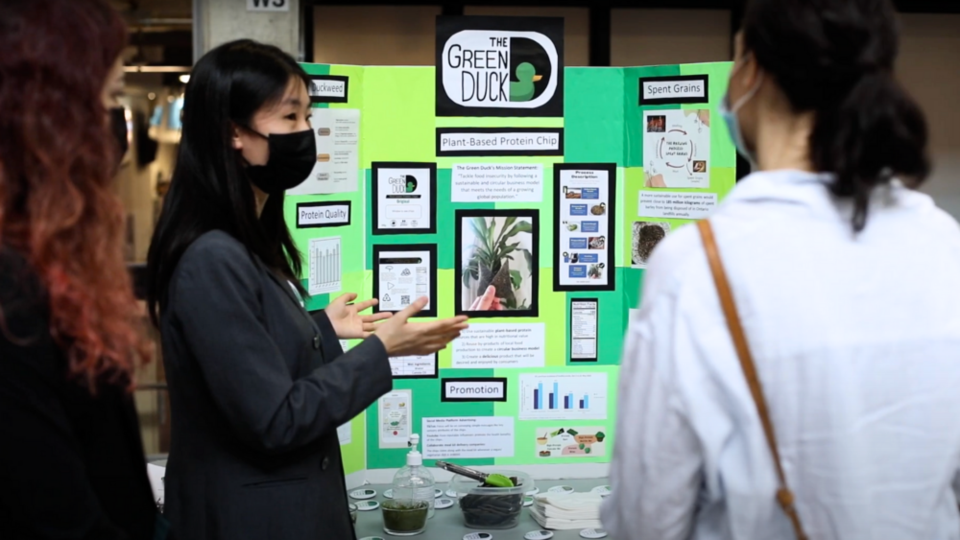With a desire to help the environment, University of Guelph students are set to showcase ideas and products to better produce, consume and recycle towards a more sustainable future.
On Thursday, undergraduates, graduates and diploma-level students will share their ideas and prototypes at the Project SOY Plus competition to seek the best products that can most impact health, the environment and society.
Project SOY (“Sustainable Opportunities for You”) Plus is an annual student contest that tests competitors’ creativity in developing new products and marketing strategies.
The theme for this year’s competition is ‘circular economy.'
More than 15 projects have been entered including non-dairy coffee creamers, fertilizer made from food waste, biocarbon hairbrushes, mushroom-based meat, seaweed bandages and digital tools to collaborate on space-related projects.
“Sustainability has always been part of the university’s mission,” said Nakita Byrne-Mamahit, project coordinator, commercialization outcomes and organizer of Project SOY Plus, in a recent university news release.
“This theme of ‘circular economy’ is timely and necessary, but it also lets students be innovative with their ideas.”
New to this year’s competition will be a creative stream that challenges students to create expressive artworks or compositions that align with the circular economy theme. This allows inclusion beyond science and business students, who typically make up the majority of participants.
Cash prizes of $2,500, $1,000 and $500 will be awarded to first, second and third places across the project stream categories.
At the finale event, the panel will also announce one creative stream work to be commissioned by the University’s Research Innovation Office (RIO).
“Innovation is perceived differently across the sciences, business and the arts. Each field has its own way of creating, thinking and building,” Byrne-Mamahit said.
“The creative stream will embrace these differences, and it’s a great chance to show the value of interdisciplinary collaboration.”
Hosted by RIO, Project SOY began in 1996 to develop new products for soybeans. It evolved to Project SOY Plus in 2019–2020 to include other plant-based species beyond soy, targeting student competitors in food sciences, agriculture, engineering and beyond.
Students learn from experts in RIO about what it takes to go to market with a new product, including patenting, licensing and commercialization.
“This competition gives students a unique experiential learning opportunity. They get to transform their ideas into reality,” Byrne-Mahamit said. “It’s an intense and deeply engaging experience that lets students learn the process of innovation and development.”
Some students have used entries to fulfill class projects or design courses. Others have gone to the Hub Incubator at the Wood Centre in the Lang School of Business and Economics to further develop their product.
"I want them to see that they have the potential to drive real, positive change,” says Project SOY Plus student coordinator Madelin Miller-Gouk
Fellow student coordinator Emma Tamburo said she hopes people will understand how easy it is to make adjustments and incorporate new products in their lives.
“That’s how we encourage a more sustainable Earth," Tamburo said.
The competition and finale event are sponsored by Food From Thought. Official competition day takes place Thursday, 12-3 p.m. in the Summerlee Science Complex at U of G. Winners will be announced throughout that afternoon.



